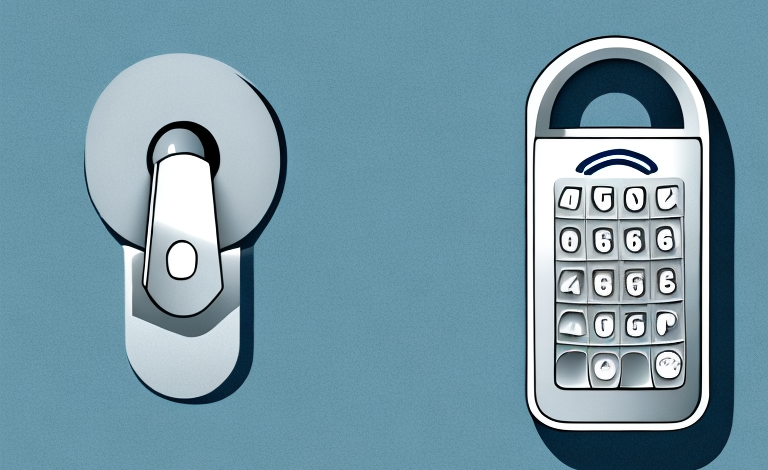Fingerprints are unique patterns that are formed on the tips of our fingers. They have been a subject of human interest and fascination for centuries. While fingerprint patterns can be similar among people, they are usually unique to a particular individual. But can your fingerprints be different on each hand? Let’s examine this question more closely.
The science behind fingerprint formation
Fingerprints are formed by the ridges of skin on our fingertips. These ridges develop in the womb and are influenced by a complex interplay between genetics and the environment. Fingerprints begin to form at around 10 weeks of gestation and are fully formed by the time a baby is born. The ridges on our fingers are arranged in unique patterns that are specific to each person.
Interestingly, the study of fingerprints is called dermatoglyphics. Dermatoglyphics not only includes the study of fingerprints but also the study of other patterns on the skin such as palm prints and footprints. The study of dermatoglyphics has been used in various fields such as forensic science, anthropology, and even medicine. For example, certain dermatoglyphic patterns have been linked to genetic disorders such as Down syndrome and schizophrenia. The study of dermatoglyphics continues to provide valuable insights into human development and genetics.
How do fingerprints develop in the womb?
The development of fingerprints is influenced by a number of factors in the womb, including genetics, the flow of amniotic fluid, and the position of the baby’s fingers in the uterus. Environmental factors such as prenatal drug use, radiation exposure, and malnutrition can also impact fingerprint formation. However, fingerprints are generally thought to be a stable trait that is unlikely to change significantly over time.
Research has shown that fingerprints begin to form as early as 10 weeks into gestation. At this stage, the skin on the fingers and toes of the developing fetus begins to thicken and form ridges. These ridges then develop into the unique patterns that make up a person’s fingerprints.
Interestingly, identical twins do not have identical fingerprints. While their fingerprints may be very similar, they are not exactly the same. This is because even in the womb, each twin has a slightly different position and movement, which can affect the development of their fingerprints.
Are fingerprints unique to each person?
Yes, fingerprints are considered unique to each person. The patterns of ridges on our fingers are formed randomly and are influenced by genetic factors. While some patterns of fingerprints can be similar, it is rare for two people to have the exact same fingerprints. This makes fingerprints a valuable tool for identification and forensic investigation.
In addition to being unique to each person, fingerprints also have the ability to change over time. Factors such as aging, scarring, and certain medical conditions can alter the appearance of fingerprints. This is why law enforcement agencies often take multiple sets of fingerprints from a suspect to ensure accuracy in identification. Despite the potential for changes, fingerprints remain one of the most reliable and widely used forms of identification in criminal investigations.
The role of genetics in determining fingerprints
Genetics play a role in determining the unique pattern of ridges on our fingertips. However, the specific genes involved in fingerprint formation are not yet fully understood. Studies have shown that certain gene mutations can lead to changes in fingerprint patterns, but these changes are usually small and do not affect overall pattern recognition in forensic investigations.
Despite the limited understanding of the genetics behind fingerprint formation, researchers have made progress in identifying certain genetic markers that can be used to predict certain physical traits, including fingerprint patterns. This has potential applications in forensic investigations, where DNA analysis can be used to identify suspects based on their genetic profile and associated physical characteristics.
It is also worth noting that while genetics play a significant role in determining fingerprint patterns, environmental factors can also influence their development. For example, pressure and friction during fetal development can affect the formation of ridges on fingertips, leading to variations in patterns. Additionally, injuries or diseases that affect the skin can also alter fingerprint patterns, making them less reliable for identification purposes.
Factors that can affect fingerprint formation
While genetics play a major role in determining fingerprint patterns, there are also a number of external factors that can affect the formation and appearance of fingerprints. For example, cuts or scars on the fingertips can alter the appearance of an individual’s fingerprints. Other factors that can impact fingerprint formation include age, gender, and certain medical conditions.
Additionally, environmental factors such as temperature and humidity can also affect the quality of fingerprints. High temperatures and humidity can cause fingerprints to smudge or blur, making them difficult to read or identify. On the other hand, extremely low temperatures can cause the skin on the fingertips to dry out and crack, which can also affect the appearance of fingerprints.
Can fingerprints change over time?
Fingerprints are generally thought to be a stable trait that remains the same over time. While small changes in the appearance of fingerprints can occur due to factors such as aging, injury, or medical treatments, these changes do not usually alter the overall pattern of the fingerprints. It is extremely rare for fingerprints to change so much that they become unrecognizable.
However, it is important to note that fingerprints can be altered or disguised intentionally. Criminals may attempt to change their fingerprints through methods such as burning, cutting, or using chemicals. Additionally, individuals may use prosthetics or gloves to hide their fingerprints. Therefore, while fingerprints are generally a reliable form of identification, they should not be solely relied upon in criminal investigations.
The history of fingerprint identification in forensics
The use of fingerprints as a means of identification dates back over a century. The first systematic use of fingerprints in criminal investigations began in the late 19th century, with the development of fingerprint classification systems by Francis Galton and Edward Henry. Since then, fingerprints have become a valuable tool for forensic investigation and are used by law enforcement agencies around the world.
Advancements in technology have greatly improved the accuracy and efficiency of fingerprint identification. Automated fingerprint identification systems (AFIS) were introduced in the 1980s, allowing for faster and more accurate matching of fingerprints. In recent years, 3D imaging technology has also been used to capture more detailed and accurate images of fingerprints, further improving the reliability of fingerprint identification in forensics.
How are fingerprints used in criminal investigations?
Fingerprints are collected from crime scenes and compared to a database of known fingerprints to identify suspects. The process of fingerprint matching involves comparing the pattern of ridges in the fingerprint of an unknown person to a database of known fingerprints. While the process of fingerprint matching is not foolproof, it is generally considered to be an accurate means of identification.
In addition to identifying suspects, fingerprints can also be used to link individuals to specific locations or objects at a crime scene. For example, if a fingerprint is found on a weapon or a piece of evidence, it can be compared to the fingerprints of potential suspects to determine who may have handled the item. Additionally, fingerprints can be used to exonerate individuals who have been wrongly accused or convicted of a crime, by proving that their fingerprints do not match those found at the crime scene.
Fingerprint technology and biometric authentication
Fingerprint technology has become increasingly popular in recent years as a means of authentication in a variety of settings. Many smartphones and other devices now have fingerprint scanners that allow users to unlock their devices and access sensitive information. Biometric identification systems that use fingerprints are also widely used in security and access control applications.
In addition to smartphones and security systems, fingerprint technology is also being used in healthcare. Electronic health records are becoming more common, and fingerprint authentication can help ensure that only authorized personnel have access to patient information. This can help protect patient privacy and prevent data breaches.
Another area where fingerprint technology is being used is in banking. Some banks are now using fingerprint scanners to authenticate customers when they access their accounts. This can help prevent fraud and identity theft, as it is much more difficult for someone to fake a fingerprint than it is to steal a password or PIN.
Can you alter or fake your fingerprints?
While it is possible to alter or fake fingerprints, it is extremely difficult to do so successfully. Attempts to alter fingerprints using techniques such as abrasion, chemical treatments, or surgery are usually detectable with current forensic techniques. Fingerprint faking using prosthetics or other materials is also challenging and requires a high degree of skill and knowledge.
However, there are some cases where fingerprints may appear altered due to natural causes such as aging, scarring, or skin conditions. In these cases, forensic experts can still use other identifying features such as the pattern of ridges and minutiae to match the fingerprints to a person.
It is also important to note that fingerprints are not the only biometric identifier used for identification. Other biometric identifiers such as facial recognition, iris scans, and DNA analysis are becoming more common and may eventually replace fingerprints as the primary method of identification.
The future of fingerprint identification and privacy concerns
Fingerprint identification is likely to continue to be an important tool in forensic investigations and authentication applications for the foreseeable future. However, concerns about privacy and the potential misuse of biometric data continue to be raised. As fingerprint technology becomes more widespread, it is important to consider the implications for personal privacy and data security.
In conclusion, fingerprints are unique patterns that are generally stable over time and are influenced by a complex interplay between genetics and the environment. While it is possible to alter or fake fingerprints, it is extremely difficult to do so successfully. Fingerprint technology is likely to continue to be an important tool in forensic investigations and authentication applications, but it is important to consider the potential privacy implications of such technology.
One potential solution to address privacy concerns is the use of encrypted fingerprint data. This would ensure that the biometric information is protected and cannot be accessed by unauthorized individuals. Additionally, there are ongoing efforts to develop more secure and privacy-preserving biometric technologies, such as facial recognition and iris scanning, which may offer alternatives to fingerprint identification in the future.



